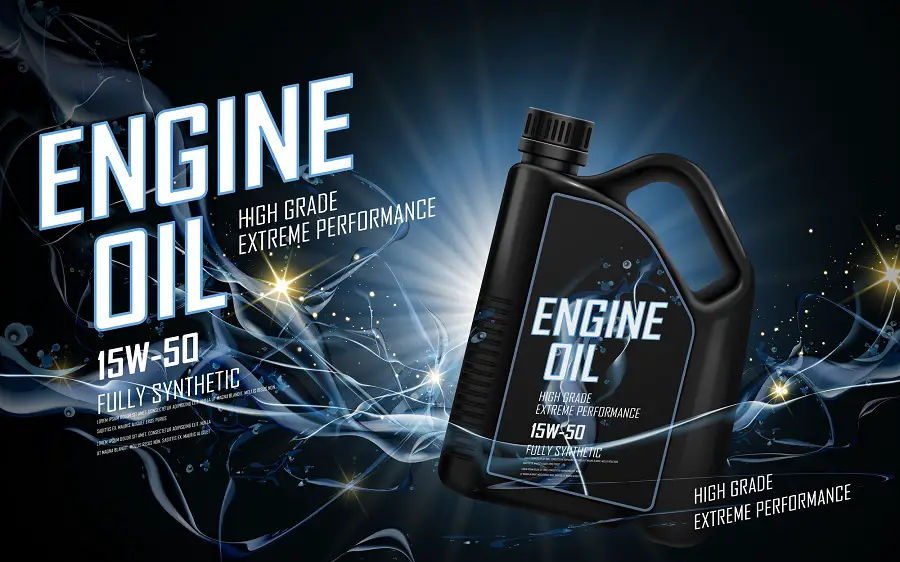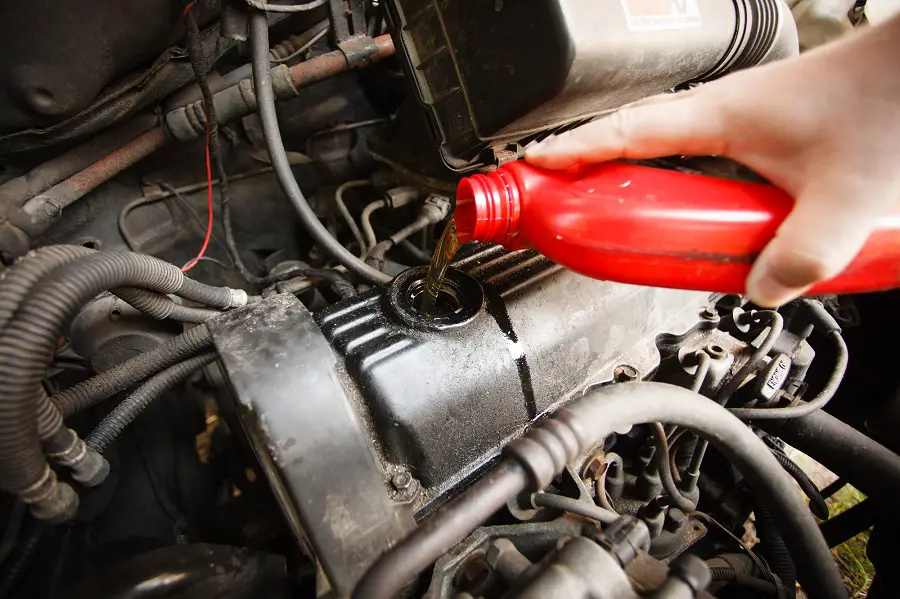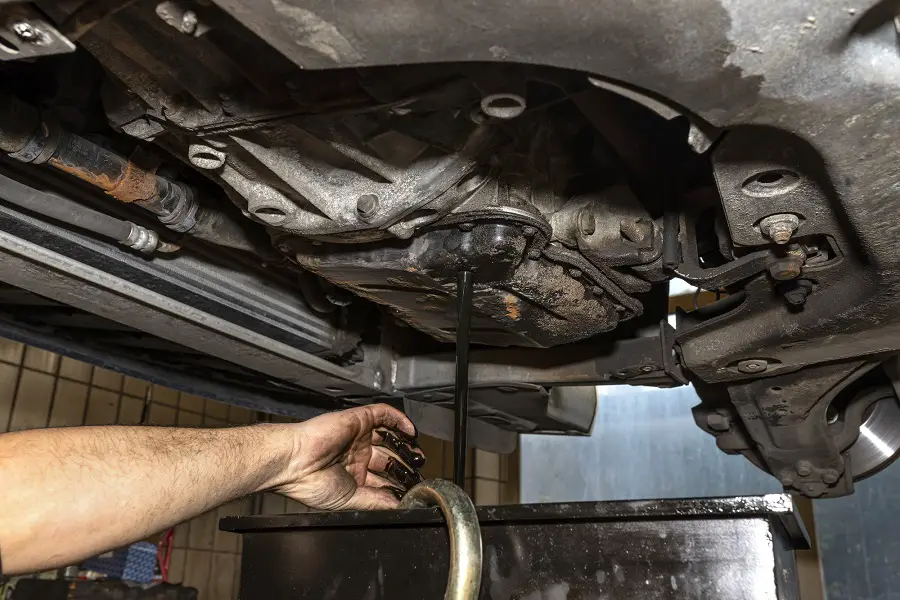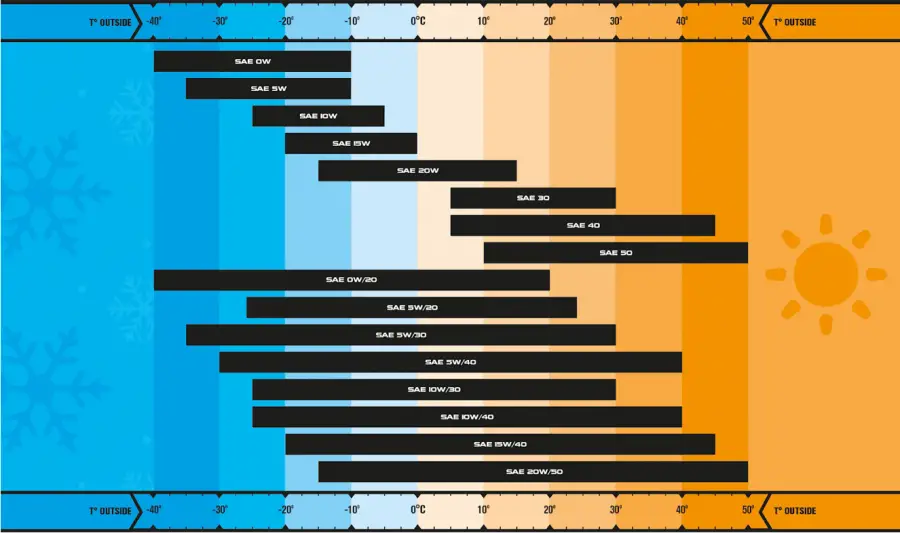We were standing in the desert with a quart of race gas left in our dump can container.
The race was over and we had a 600-mile drive home. We didn’t want to smell gas the whole way.
What were we supposed to do with the leftover gas?
I could pretend that I accidentally tripped and it spilled on the sand. I could try and light it on fire… discreetly. Like that would be discreet!
This is a common problem and we should spend some time exploring the solution.
Whether you’re a racer or just a guy with a lawnmower, you probably have unwanted gasoline at times. Sometimes your gas sits in the mower or on the shelf over the winter and when summer comes around it has turned bad.
If you’re wondering what to do with old gas, you’ve come to the right place.
How to Dispose of Old Gasoline: The Short Answer
Before getting rid of old gasoline, figure out if you can repurpose or reconstitute it. If not, you can pour it into a gas-friendly jug and bring it to a disposal center. The place you choose depends on your regional laws and the available services.

How Long Does Gas Last on Average
Most unleaded fuel will last about six months on the shelf or in a non-contaminated tank before going bad. Fuel that is ethanol-blended or has a higher concentration of ethanol (like E85) will go bad in three months. If you treat fuel with a stabilizer, it can last from one to three years.
If you want to extend the life of your gasoline, you have to introduce chemical “stabilizers” into the fuel to keep it combustible for longer than half a year.
When gasoline sits for an extended period of time it can begin to break down which causes it to lose some of its ignition capabilities. It will still be flammable and explosive, but not as much as when fresh and not enough to consistently keep the engine running.
So remember that gas will usually last for the offseason if in a mower or piece of equipment so long as it’s not over six months. Any longer “storage” and you will want to help keep it stabilized.
Does Gasoline Go Bad, Get Old or Expire if it Sits too Long?
Yes. It can get old or expire. As mentioned above, that takes about six months.
Most old-timers will say that when gas gets old it turns to “shellac” which means that the gas begins to separate and the petroleum components will cause the fuel to not ignite well and often leaves a colorful coating on the inside of your engine.
It may even gum up your motor.
Now “Bad Gas” refers to gas that has lost its combustion due to contaminates like dirt, debris, rust or other foreign objects. Gas can go bad when fairly new if you introduce it into a tank that has started to rust.
What Do You Do With Old Gasoline?
Before you can manage your unwanted gasoline, you will need to determine if it is usable. Then, you can take the necessary course of action to handle it.
You want to ensure that you take care to perform proper disposal of your waste gas.
How Do You Know It’s Old or Contaminated?
Typically, gasoline has a translucent or yellowish hue, but its color can change based on the source and octane. Also, the manufacturer may add dyes during processing.
One of the simplest ways to determine if you have bad gasoline is by checking the color. Gas that takes on an orange hue will need replacement. This usually indicates that it is old.
Dark orange coloration usually means that the fuel is contaminated and mixed with an unwanted substance – like rust from a bad fuel tank.
You can buy some fresh fuel from the station you purchased your old supply from and compare the colors. If they are similar, your gas is probably fine. Otherwise, you will need to switch it out.
As a rule of thumb, you should not use gas you’ve stored for over a year. While it may not have gone bad, it most likely is not usable.
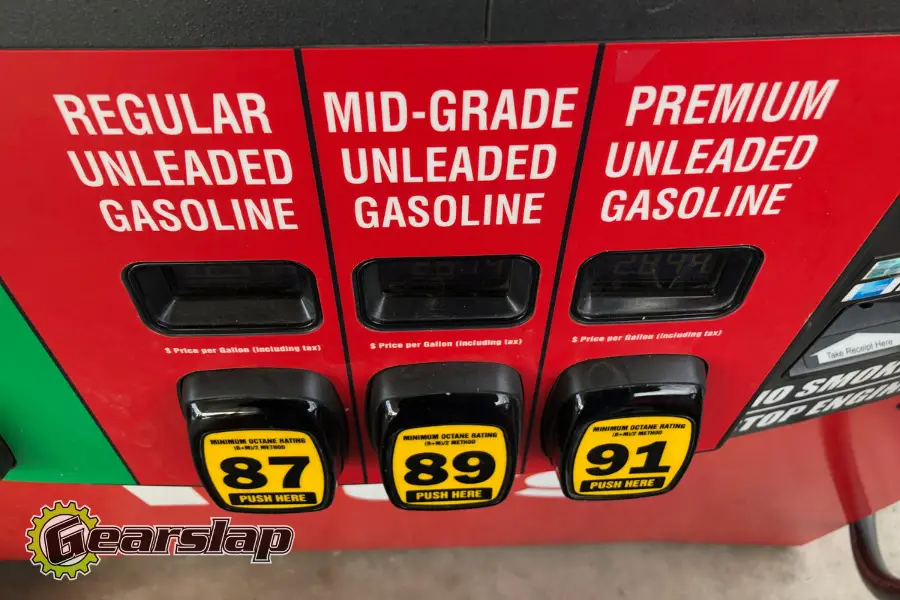
Can You First “Use It” or Repurpose It Before Disposing of It?
You can mix older gasoline with “good” gas to use it. The ratios of good to bad and how old is too old vary, but you can usually “restore” gas that is about a year old by mixing it with a 1/10th ratio of premium fuel.
If you dilute bad fuel with good fuel you can usually get it to a point where it will allow you to burn through the old gas. It will smell bad and won’t often run very well, but it will keep you from wasting it or needing to dispose of it.
If you have some injector cleaner or “octane boost” available, you can use that to freshen up your old gas as well. The whole point is to get the old gas to burn at a point of combustion that is sufficient to run your engine.
If it’s not enough to burn in the engine, or is contaminated in some other way, you can repurpose it. There are a few ways to repurpose old gasoline before disposing of it. Some of the uses include:
- Mixing it with palmitoyl and spraying it on weeds to kill them
- Killing ants by pouring it into the mound
- Using it as a firestarter for a bonfire
You might have some luck with using it in an old lawnmower or tractor.
Why Might You Have Old Gasoline?
There are a few reasons why you might have old or contaminated gasoline on your hands. I’ve experienced everything from having gas left over from a race to finding a jug of gas in the crawlspace of a house we had just purchased.
That one seemed a bit dangerous to me! Here are a few other reasons you may have old gas and what you can do about it:
Gas Left in a Lawnmower Over Winter
When it starts snowing, the grass stops growing and we put our lawnmowers away. However, your gas does not spontaneously disappear with the greenery.
Make sure to check the gasoline in your lawnmower before using it again in the spring. If you have a short winter season, you may be able to get away with using the old gas without needing much else.
I usually use a bit of starting fluid spray on my lawnmower at the beginning of the season and it almost always first right up and will burn through the old gas. Our winter goes from November to April, so that’s right at the six-month limit.
If your winters are longer, you would do well to stabilize your fuel when you winterize your mower. Otherwise, we’ve taken the approach where we burn through the fuel near the end of the season and we call that “the official end”.
Left in a Container/Storage
Gasoline containers have airtight seals to prevent air from getting in. Nevertheless, leaks are inevitable.
Gasoline oxidizes with exposure to air. The oxidative stress will break down the gasoline and prevent it from burning in your engine.
Also, water vapor in the air can condense inside the tank and contaminate the gasoline. Water contamination can lead to your engine hydrolocking since it cannot combust or compress.
If you have a full container of fuel during the mowing season or race season, and you don’t use it all, it’s a good idea to add some fuel stabilizer to it. Especially if it will be longer than six months before you use it up.
Extra From a Race
If you’ve ever participated in a race, you likely stocked up on gas beforehand. The gasoline not burned from racing will sit in your engine until its next use.
If you don’t race frequently, that gas could be pretty old. Your best option is to try and use it up in your race vehicle the next time you take it out for a test drive.
If it’s not “pure” race fuel, you can possibly add it to your daily driver to use it up. To dispose of a small amount you may ask another team if they need some or you can dispose of it at a disposal center.
Need to Drop/Repair a Gas Tank
While unusual, sometimes you need to repair or drop your car’s gas tank. Damages to the tank can contaminate the gasoline, so check that your system is running well if you find bad gas.
If you have to drop your tank, it usually means you either have bad gas (and need to replace the tank) or you’re dropping the tank so you can access the undercarriage. Either way, you’ll want the tank to be as empty as possible before you drop it.
If the fuel in the tank is good/fresh you can put it in a container and use it in something else. If it’s bad then your options are limited to the options listed below.
To Winterize a Motorcycle/ATV/UTV
Many people fill their tanks to the top to winterize their motorcycles. Once winter ends, you’re stuck with a tank full of old gas. Keeping it full prevents oxidation in your tank but can leave you with a tank full of old gas.
If this is your practice, it’s a good idea to keep it fresh by using some stabilizer.
Other Ways to Prep Fuel
Instead of just filling your tank, you should empty it and pour in a fuel stabilizer. Then, you can fill it with either gasoline or 50W heavy oil.
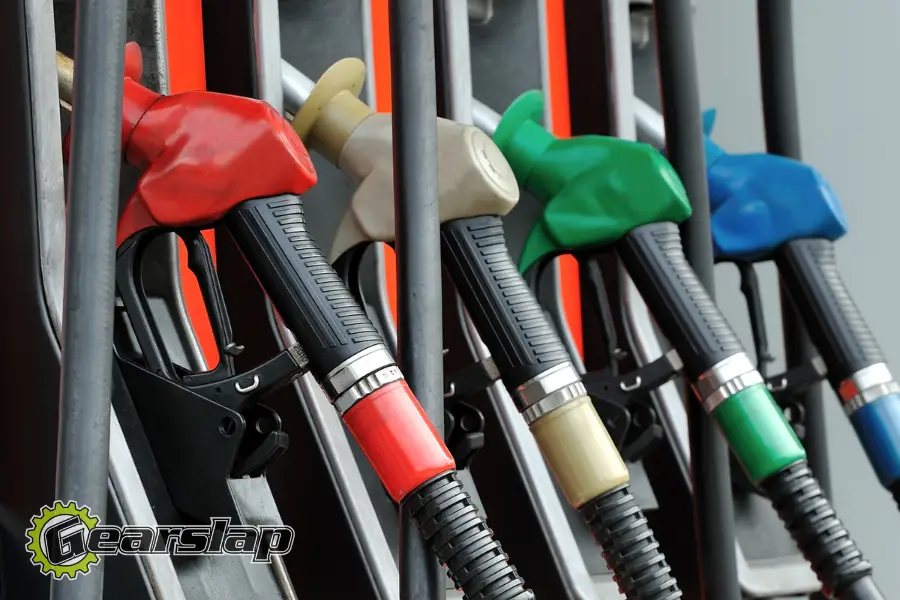
How to Dispose of Old Gas: What’s the Proper Way to Get Rid of It?
Follow these steps if you want to dispose of gas correctly. If you have bad gas (with contaminates or water for example) you’ll want to approach it differently than if it’s just old. Here are a few options with various scenarios:
Isolate the Gasoline
Begin by pouring the gas into a gasoline-safe, clear container. Wait for any water to separate to the bottom of the jug.
Once they have fully separated, pour the gasoline into a different jug or container. Then, you can dump the water down the drain.
Analyze the isolated gasoline’s color to see if it appears usable. You can give it a try if it has a reasonable shade. If your gasoline works, you can skip the rest of the steps! If it does not work with your engine, return it to a disposable gasoline jug.
Prepare for Transportation
Use a certified fuel container or jug. Don’t use a milk jug! Use a funnel to transfer the gasoline to the waste storage unit and minimize spillage.
You could go with a traditional jug, but some disposal centers keep the can. Getting a cheaper one can save you money if you can’t take your gas container back.
Load your gasoline in your car and pull up your GPS.
Find a Center for Gasoline Disposal
There are a few types of places that will accept your old gasoline. See if you have any in your area and head over.
Hazardous Waste Center
A hazardous waste center will take your gasoline. Make sure to call before to see if they can accept more gas, how much they’ll charge, and their household hazardous waste collection days. They store the bad fuel, but they do not repurpose it.
Recycling Center
If you have a local recycling center that accepts gasoline, you can have professionals repurpose your fuel. However, not many centers take gas. Those that do often restrict the times they’ll accept it. You can call before you go to see if there are any limitations.
Landfill or Junkyard
Many times, landfills and junkyards have tanks prepared for chemical disposal. They might find applications for the gas, or they’ll just hold onto it for you.
Fire Departments
Every city has a fire department. They can get rid of your gasoline or tell you how to do it if you bring it to them. A fire department is an excellent drop-off facility.
Disposal Services
You can look around for a disposal service that picks up the gas from your house. Sorry, you might have to unpack your car.
However, these services often charge a lot. Only resort to a disposal service if you don’t have other options or have too much gasoline to transport yourself.
Mechanics
Your local auto garage probably houses a lot more hazardous waste than you think. So what’s another can of gas? Check with them before to see if they’ll take your gas for disposal. Most don’t charge to take gasoline, which is another plus.
What NOT to Do
If you cannot immediately get rid of your gas, don’t go pouring it down the drain or slipping it in the trash. You can store it in a sealed container for as long as you want. Keep it away from children and pets and you won’t have any problems.
Can You Get in Trouble for Dumping Old Gas in Your Yard?
If your yard does not have a license or permit to receive waste, you can get charged for illegal dumping. The gasoline can mix with runoff and enter waterways, making it a public safety hazard.
The same goes for pouring it down your kitchen drain. Disposing of gasoline on your property can lead to pollution and ecosystem destruction.
Is It Bad to Light It on Fire?
Burning old gasoline isn’t inherently worse than burning fresh gasoline. However, you shouldn’t try to burn all of your old gas at once. You can store small amounts as a firestarter.
Just remember, gas is extremely flammable and dangerous to burn in an uncontrolled environment. Be cautious. Then be extra cautious when burning gas.
Can You Bury It?
You can bury gasoline in ant mounds to eliminate the pests. However, it can contaminate groundwater if you bury too much and it leaks.
All in all, your best bet is to take it to a disposal center. It might be inconvenient, but it won’t cause any environmental damage.
Racing Fuel: Race Settings
If you’re a racer, you might have some other considerations when it comes to getting rid of old gas.
What About in an Off-Road Race?
Off-road races require durable vehicles and specially-designed fuel cell bladder tanks. If you’re away from civilization and have old gas, try mixing it with new gas to see if your engine still runs. You might need to follow the steps above if your car can’t handle the old gas.
How to Dump Gas in the Desert (Can You?)
Few people live in the desert, so you might think pouring gas there is safe.
Wrong.
These ecosystems house lots of plant and animal life, and even an isolated desert connects to cities. Gasoline dumped in a desert can enter groundwater and ruin the city’s water supply.
If you’re caught, you will also get charged for illegal dumping. So don’t do it!
What About at the Track?
If you’re racing on the track and need to get rid of some gasoline, invest in a separate can to store your unwanted fuel. After collecting it for a bit you can take it to a disposal center.
Or, here’s an idea – take the car back out for a few more laps to burn it all off!
Can You Dump Race Fuel Back in the Main Can?
You could dump race fuel into the main can, but it might not mix well with the new gasoline. You should test how your engine runs on old fuel before a race to see if it is a viable option. If it does not work when mixed with your new fuel, you will want to dump it in a separate jug.
Can You Burn it Off?
You might be able to burn off old fuel if you mix it with new fuel. However, this depends on your car’s capabilities.
After finding myself standing in the desert with a bit of gasoline in my container, it prompted me to figure out how to best handle it. I wanted to just dump it in the desert where we were.
But if an official would have seen us, it would have burned the whole trip by getting disqualified. And finishing the race is what fuels the fun!

